ReCedarKey – A Grassroots Coastal Community
Cindy and I moved to Cedar Key Florida in December of 2009. We had spent the previous 4 years traveling the United States trying to experience small town America at its best. We spent as much time while on that great adventure hiking, biking and paddling in the great outdoors. One thing that kept coming up on a daily basis was ‘we were losing the wild of our country.‘ We would ask one another constantly “Why aren’t more areas planting more trees?!“
We tried our hardest to stay out of any big cities. Always searching for the small towns that offer that close knit community feel. It was what attracted us to Cedar Key so much.
From the first few months we started creating the Low Key Hideaway, we started planting trees and native plants around the grounds. If memory serves me correct, by the time we sold that amazing piece of property some 6 years later, we had planted dozens of trees on the lot and had propagated 100’s upon 100’s of plants from locals sharing their cuttings. We got to the point that we had so many plants we started culling and giving away cuttings to visitors and other locals. We won ‘Garden of the Month’ multiple times in the few years we were lucky enough to have that property.
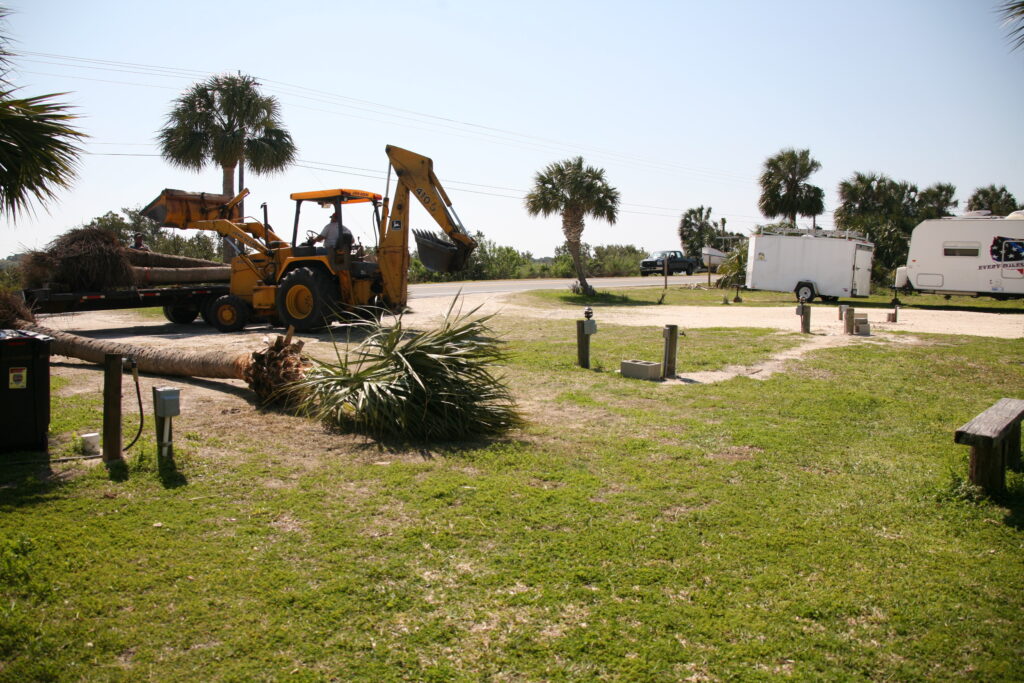
Another project we worked on to save some trees in Cedar Key was when the local power company was planning on cutting down dozens of Sabal Palm trees from around the island due to them being under our powerlines. I suggested to the city that we move them to our local marina parking lot where they were trying to raise money in a beautification project. In doing so, I inadvertently volunteered myself for a non-paying 40 hour multiple work week as the ground guy to the late Gilbert McCain who worked the backhoe that did all the heavy lifting.
Side Note: Gilbert had transplanted all the palm trees from a empty lot in Cedar Key to our LKH property as a favor to me for $100 a tree. We thought it was another great way to keep the trees from getting cut down and allowing us to have mature palms rather than planting potted palms that would take years to grow above the height of the RV’s. Fast forward a few months later, we’re sitting in the city commission meeting when they say they’re going to cut down every tree around the island that has a ribbon around it because it’s under a powerline. My dumbass raises my hand and says “Why not move them to the marina where you’re trying to raise money for the beautification project?” A city commissioner asks “And how can we afford to do that?” I reply “Gilbert will do it for $100 a tree! That’s what he did all mine for.” I thought Gilbert was going to come over the seats at me in that meeting!!! They hit the gavel and said “We all agree that we’ll pay Gilbert $100 a tree to move them to the marina.” I was all proud of myself for saving a bunch of trees and saving the taxpayers money from the city having to pay to have mature trees brought in. We walked out of the meeting and Gilbert grabbed my shirt all gruff in Gilbert fashion and said “DONT EVER VOLUNTEER ME for a job again when you’re the one dictating the price! I did you a favor at $100 a tree, that’s not my normal price!” He went on to say “You’re working for free as ground guy on this whole project!“
Next time you’re in the marina parking lot in Cedar Key, just remember we re-planted all those palm trees you see rather than let them be cut down.
MOVING ON
Over the first few years of living in Cedar Key, we noticed how delicate the surrounding islands are around the Cedar Keys due to the shifting beaches. Each time we’d go out on the boat after a afternoon squall or summer storm, we’d notice the beaches and dunes had shifted one way or the other. We’ve always felt those outer islands offer up the first line of defense to Way Key, which is where the main town of Cedar Key is situated.
I started approaching the different powers-that-be to ask about doing something to protect those outer islands. In a logical world, one would think this would be an easy task. Unfortunately we live in anything but a logical world! When I suggested I’d buy, on my own dime, then install, what is known as Hurricane Fence, a simple wooden fence you put along the beaches to create dunes and keep the sands from shifting, I was told a stern “No, this is not allowed!“

I joined the Nature Coast Conservancy at the suggestion of a good friend of mine that happened to be the mayor of Cedar Key at the time and became part of their Board of Directors. I thought being a part of that local group would help getting the much needed trees and native vegetation planted on the outer islands. I mean isn’t that the goal of a Nature Conservancy? After a few meetings, with countless suggestions of ways to get the process started, I was basically told “It would not happen!” I removed myself from that group and went back to the drawing board.
A few years go by, a few Hurricanes do monumental damage to our outer islands, not to mention the main island of Cedar Key…I’m sitting in the Thirst Emporium talking to a good friend of mine. Dave, who happens to be a professor at University of Florida in their Environmental Horticultural Department, and I mention how much backlash I’ve gone up against with trying to plant trees and native plants on the outer islands.
Dave starts telling me that this is his expertise and that we should gather seeds and clippings from only the strongest of trees and plants that have survived the last few storms. The Heritage Cedars, the Native Plants that pop right back up after a storm and start propagating only those varieties. This way we know they’re the strongest and the ones that’ll survive no matter what Mother Nature throws at them.
Let me backup and introduce you to Dave Clark, the brains behind our idea. I’ve learned so much knowledge from just sitting around sipping on drinks with Dave that I feel like I have a Bachelors in Horticulture. Each time I’d make some wild suggestion that we only propagate plants from heritage trees, Dave would say “That’s my expertise!” and he’d explain how they do it. I’d point out native plants that are thriving and ask “why are these doing so good when everything else around them died?” Dave would go into detail explaining it in laymen terms to me so I’d understand his explanation. This was when our project started evolving and gaining traction.
We put together a proposal and went to the powers-that-be at the Cedar Keys National Wildlife Refuge. We explained that we’d spoken with a shoreline restoration expert and have a list of native plants that are approved to plant along the shoreline and up into the dunes. Our Cedars are all grown from heritage cedars thriving on the islands and all native vegetation we plan on planting was propagated from existing plants that survived the last few hurricanes. The only thing we’re not growing ourselves is Sea Oats and Panic Grass, we have to buy those from an approved nursery that’s south of us.
This first foray into this experiment/project was simply an idea between a few of us who said “Let’s get some stuff in the ground, see how it survives or adapts to being planted out on an island without any maintenance at all.” We were told by the Florida Forestry department that the best time to plant would be mid-summer when this area gets regular and consistent rains. Only problem is, who wants to be out planting in July and August!? They told us most of the plants would probably die off anyways simply because we’re planting them in pure, white, sugar sand and it’s not like we can go out there and water them on a daily basis. Our simple thought was… put enough plants in the ground that even if over half of them die, we’d still make a such an impact that over the next few years it would start to make a noticeable difference.
Side Note: (There will be a bunch of side notes as this ReCedarKey project is a wild ride in serendipity) Dave had collected a few Ziploc bags full of cedar seeds during one of the months the trees were all berried out to start growing in his nursery. He was happy with the seeds survival rate and told me that for almost every seed he germinated, he was having trees growing.
Problem is, to grow a tree from a seed is a very slow process. We figured it would take us a few years to get the trees grown to a mature enough size where we could transplant them from the safety of a nursery to the outer islands of Cedar Key. We all just agreed while we waited, we’d spread the word on our project to try and gain traction and get locals behind it. I mean who could be upset about a bunch of locals planting native vegetation trying to strengthen the islands? At a cost to NO ONE!?
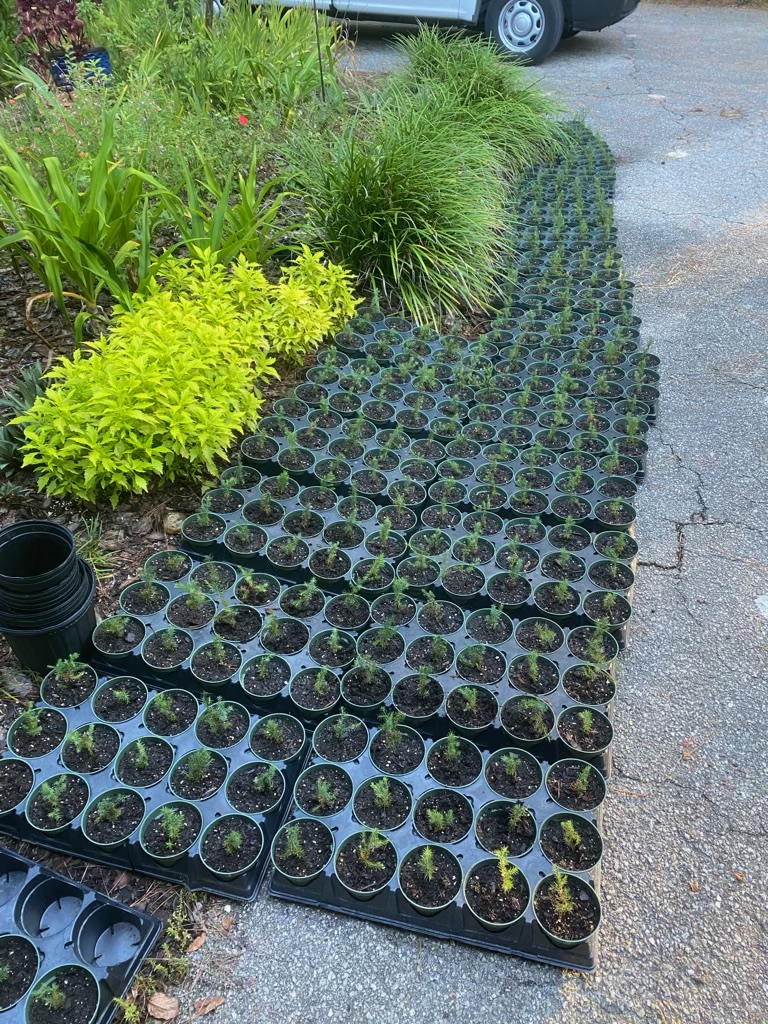
In one of our daily phone conversations where we update one another with progress of what’s growing, I suggested to Dave that we just go to a local nursery and buy a few dozen cedar trees so we could put a few on each island to see how the surviveability would go. He agreed it was a good idea.
I called Andrews Nursery in Chiefland where Cindy and I had bought all our Slash Pine we’ve planted on our property. (I think we’ve planted 3000 slash pine and 500 bald cypress on our property up to this point) We found out that Andrews Nursery doesn’t grow cedars, but they gave me a number to a different nursery that had cedar trees just north of us.
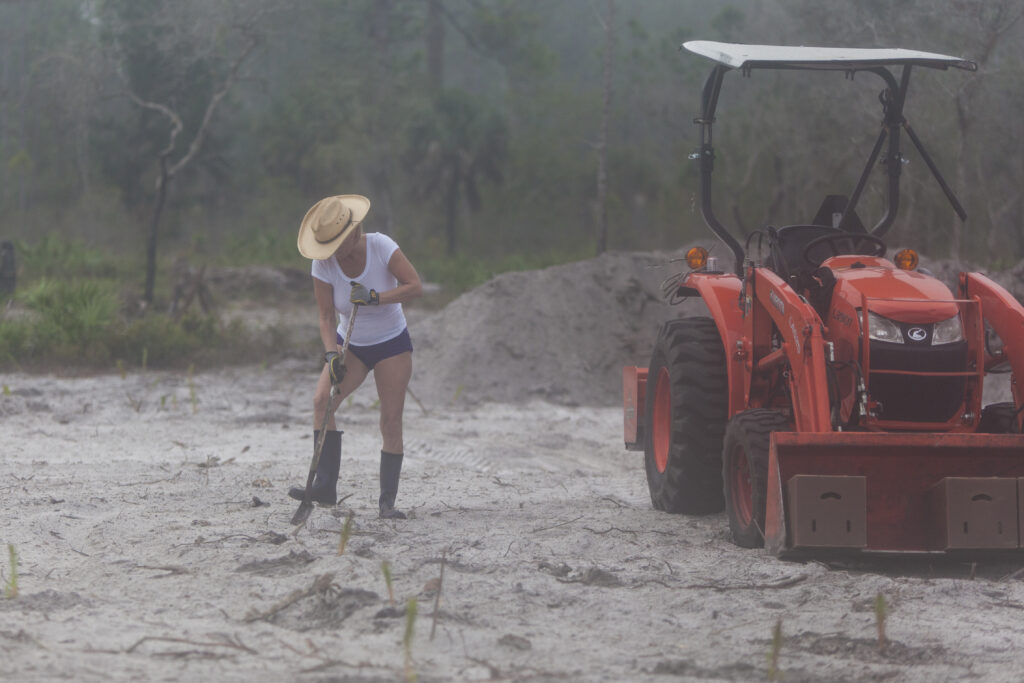
That phone call was like a steroid shot in the arm to our project. In talking to the the very nice woman that answered the phone, I explained that I wanted to buy a few dozen cedars and explained what we were doing.
She said “Well first things first. We don’t sell to the public and we don’t sell in small quantities, but you’ll be very surprised that we thought, if we were going to grow cedar trees, why not propagate them from the one place that’s so well known for their cedars!“
She went on to tell me that every cedar tree they grow is from the heritage cedars growing in Cedar Key. She also told me that this late in the season, I was calling her in late November of 2024, that she only had 1000 2 year old cedars left of the 5000 they offer up each year. Serendipity at its finest!
After a very excited phone call back to Dave, we ended up buying all 1000 Cedar trees they had! Dave explained that buying 2 year old cedars from this nursery was less expensive than it was for us to take the effort to grow them out in his nursery. And it 100% achieved the objective we had set out to achieve…local grown trees propagated from heritage trees that had survived hundreds of storms on the islands we are trying to protect.
A simple idea that had started in 2009, had been talked about non-stop and kicked to the curb so many times, was finally going to grow some roots and become something that hopefully helped to protect these islands.
A wise man once said “A society grows great when old men plant trees in whose shade they shall never sit!“
Stay Tuned, this gets better the longer you follow…Please visit ReCedarKey


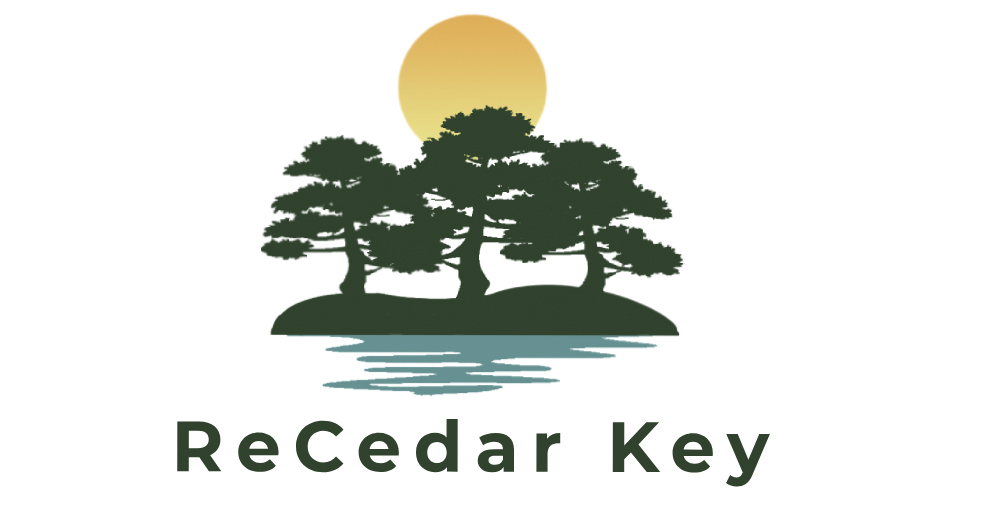
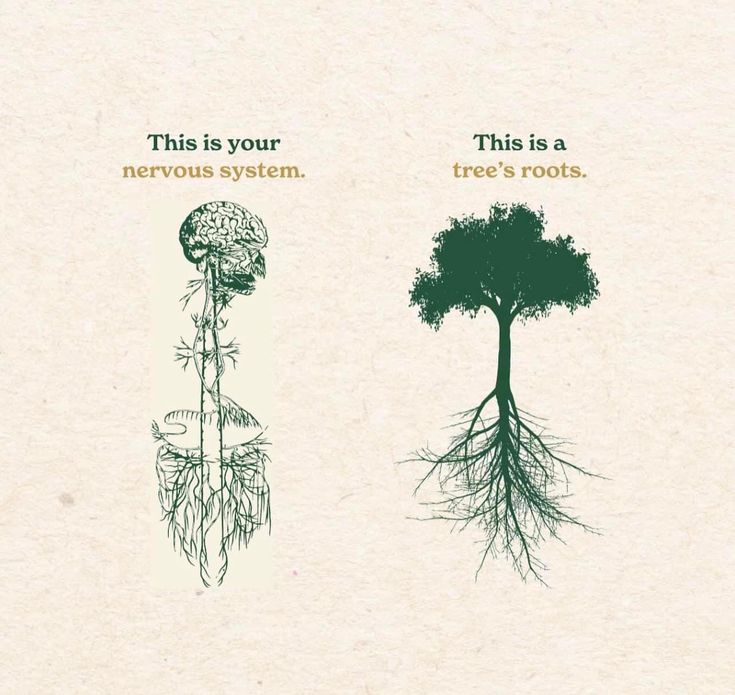

No comments yet.